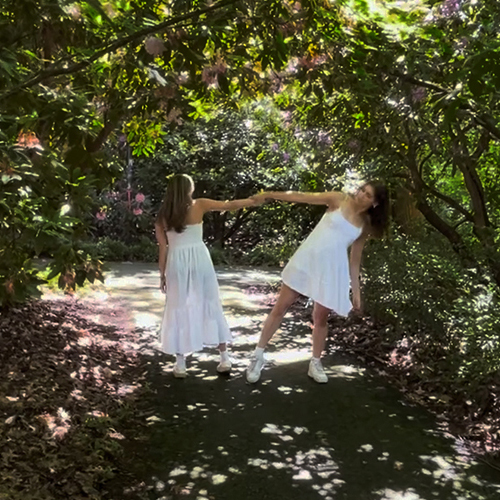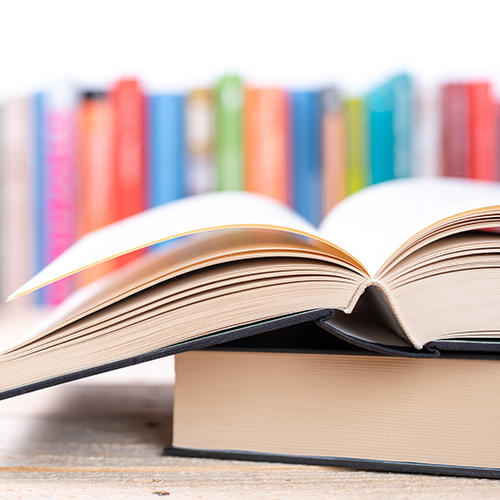
A group of UW students, gathered near a parking lot on a blustery day, screamed in unison. The release was exhilarating after months of COVID frustration. But their orchestrated scream was also part of a student art project that combined sculpture and performance art.
The assignment was for Introduction to 3D4M, a course designed for students entering the School of Art + Art History + Design’s three-dimensional forum (3D4M) program. The course presents three-dimensional concepts in the production of art and a critical, formal vocabulary in the pursuit of individual expression. It also offers an overview of materials and technical processes in how to make art forms.
Though class sessions usually take place in a studio-based environment, the spring and summer 2020 terms were taught virtually due to COVID-19. But this past fall, one of the course sections was offered in-person — all outside.
“What the class used to be, how it was taught online, and how to teach it in person when we are not able to be in the studio or the wood shop — those are all three drastically different assignments or problems for me as a teacher to solve,” says Michael Swaine, assistant professor of art, who taught the class.

Before COVID-19 hit, students in Intro to 3D4M learned about the tools and techniques involved in creating art forms, including learning to safely use table saws and forge metal. And even then, Swaine encouraged students to get out and explore the world around them and find art where they might least expect it; one of their projects included making a sculpture and taking it to various spots around campus to have passersby interact with it.
But in the early days of the pandemic last spring, Swaine encouraged his students to find materials to sculpt with at home. Many of his assignments revolved around art in the kitchen. Toasters, microwaves, and freezers became the tools, with food as the medium.
“One student made these really beautiful frozen banana shapes with food coloring. Another made ice sculptures. They all presented their work using videos. You could say we all learned a lot about making videos as well as sculpture,” Swaine says. “One surprise benefit was that the work produced in a pandemic-necessitated Zoom class felt very contemporary. Being alone in your kitchen, using what you had — that was timely.”
I’m going to remember this meaningful class for the rest of my life as something that helped me get through a really tough time.
Being forced to go online served as a good reset button, but after spring and summer terms online, Swaine decided to launch an experiment: an in-person, socially distanced Intro to 3D4M class held entirely outside, with everyone wearing masks. During the first class, each of the 16 enrolled students received a six-foot walking stick. This served a dual purpose: They decorated the walking stick to make it their own — and used it to ensure sufficient physical distancing. Classes met in a brick courtyard between the Art and Music buildings on the UW campus, but the group traversed all over campus and Seattle during the course of the fall term.
In addition to exploring found art in the outside world, students created their own public art. For one assignment, they created a sculpture that could be attached to a chain-link fence. For another that combined sculpture and performance art, they made sculptures that incorporated their physical self in some manner and then presented themselves as an art form to the rest of the class.
“[Michael] had us put ourselves in place of the ‘pedestals’ for our work, holding or presenting it in some way. He gave the presenter the power to direct the audience [of classmates] to do whatever they wanted," says Gigi Costello-Montgomery, ’21, an Interdisciplinary Visual Arts major. “This was very much outside of my comfort zone, but it was a great experience for me to practice using my voice and being physically involved with my work in a safe setting. Another student wanted everyone to scream together for the duration of her time presenting. That felt very of the moment. This collective, in this time we’re living in, going and experiencing these places and moments together, you couldn’t help but feel you were a part of something.”

Spending time outside in Seattle was not without its challenges. The required masks sometimes muffled class participation. Physical distance made trying to get to know others complicated. And the class was held rain or shine.
Swaine recalls bringing the class to a spot under an I-5 overpass near NE Ravenna Boulevard just to get out of the driving rain. But then it became so loud they couldn’t hear one another, so they all began texting each other their observations of what they were encountering.
“That was a fun afternoon. And every day there were things we all had to learn together,” Swaine says. “Some of those were just about dealing with having a class where you’re all outside and unprotected from sound and weather. I think it made us more of a team, more of a family.”
Today’s uncertain conditions and unprecedented circumstances are actually doing a lot for art, Swaine says. Removing oneself from the studio to be confronted with the outside world keeps the work new and different. It eliminates the normal day-to-day expectations of how to make things, letting artists come to their own conclusions about the type of art they would like to produce.
“Michael is a breath of fresh air,” says Costello-Montgomery. “He adds wonder and playfulness that makes making art worth it. And he’s a natural when it comes to coming up with new ways to make something in a way no one ever has before. It was very refreshing. It made us feel like we could do things differently. We felt safe — in our distancing and in our art.”
Costello-Montgomery also found that the class helped relieve stress. “Even when it was early or cold, I always felt so much better having gone,” she says. “I saw so much more of the campus and of Seattle than I have ever seen or noticed before. I’m going to remember this meaningful class for the rest of my life as something that helped me get through a really tough time.”
. . .
Learn more about the 3D4M program in the School of Art + Art History + Design.
More Stories

Democracy by the Numbers
Mathematics and Democracy, an undergraduate mathematics course, explores the role of math in many aspects of democracy, from elections to proportional representation.

Dancing Across Campus
For the dance course "Activating Space," students danced in public spaces across the University of Washington's Seattle campus this spring.

Read or Listen to Faculty Favorites
Looking for book or podcast recommendations? We asked faculty who've been featured in Perspectives newsletter during the past academic year to suggest a personal favorite.